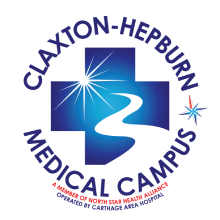
.1).png) Claxton-Hepburn
Claxton-HepburnMedical Center
EGD is an endoscopic procedure that allows your doctor to examine your esophagus, stomach, and duodenum (part of your small intestine). EGD is an outpatient procedure, meaning you can go home that same day. It takes approximately 30 to 60 minutes to perform.
EGD is used to evaluate a number of digestive disorders. It is a popular diagnostic option because patients generally tolerate it well and it causes minimal discomfort.
Abdominal pain
Heartburn
Persistent nausea or vomiting
Swallowing difficulties
Upper gastrointestinal bleeding
Chest pain (without evidence of heart disease)
Bloody stool
Periodic screening, if your doctor thinks you are at risk for developing a digestive disorder
Surveillance to monitor the progression of an existing condition
Removing foreign substances
Controlling bleeding
You will need to follow specific preparation instructions prior to the EGD.
During the EGD, your doctor will:
Anesthetize your throat with a topical anesthetic to suppress the gag reflex.
Administer pain medication and a sedative.
Place a plastic mouthpiece between your teeth to prevent damage to the endoscope.
Insert the endoscope; as you swallow, the swallowing motion guides the endoscope through your esophagus, stomach, and duodenum.
Examine the mucosa (lining) of your gastrointestinal tract as the endoscope moves through your tract. The images are displayed on a monitor.
Pass instruments through the endoscope if necessary. For example, he or she may want to use biopsy forceps to obtain samples of tissue or digestive fluid. The samples are sent to a laboratory for analysis.